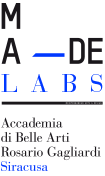PRESERVATION
Scarcity and abundance in food are connected through preservation.
The preservation of food can be traced well into prehistory and has played a pivotal role in the evolution of mankind. It has allowed us to extend seasonal produce, protein and vitamins to travel for longer periods of time and discover the world. Preservation was used for food security year-round and in times of drought and other natural unpredictable phenomena. Preserving food can add beautifully complex flavours and textures but essentially prevents bad bacteria to grow and destroy the food.
From a historical point of view, the most common approach to preservation is to deprive the microbes of the water they need to thrive, either by dehydrating the food or by adding salt or sugar, which take water away from microbes by chemical means. Another way to hinder bacterial growth is to lower the pH of the water contained in the food by adding vinegar or some other acid, or else by encouraging the growth of certain desirable bacteria on food that can out-compete the microbes that cause spoilage. Most other methods of preserving, such as smoking and freeze-drying, work by removing water or adding compounds that directly suppress bacterial growth, or by some combination of both. Canning involves sterilizing food so that all enzymatic activity and bacterial growth is halted. Freezing, on the other hand, does not eliminate enzymes or bacteria, but instead, it effectively halts their activity to prevent spoilage. Heat destroys all bad microbes, but if used as a preservation method, it will always need an additional method to keep the spoilage microbes from restarting their process.
In this workshop, we will explore the power of preservation in times of future food scarcity. We will explore, identify and map edible and seasonal ingredients around us and find a way to preserve them. During this workshop, we will learn from the past but always keep in mind the future. With design methodology, we will update or hack preservation methods where possible. Syracuse is the ideal place to test the forces of nature like the sun, salt and wind but also the ideal place to enjoy the variety and plentitude nature has to offer.
- Slot 1
1st slot . 22—27.July

